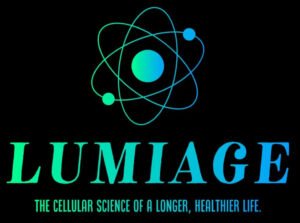
Bone Fractures: A Common Risk
Bone fractures affect many people over their lifetime — approximately 44% of women and 25% of men will experience one. Risk increases with age, particularly after 55, when reduced bone density becomes a major factor.
Bones’ Natural Healing Process
Bones are naturally capable of repairing themselves, thanks in large part to stem cells. When a fracture occurs, the injured site releases cytokines — signaling molecules that trigger stem cells from the bone marrow to migrate to the fracture. Once there, stem cells can transform into bone cells and blood vessels, helping to rebuild the damaged tissue. Over time, however, the number of circulating stem cells declines, which can slow bone repair in older adults.
Stem Cells and Bone Regeneration
Modern research has shown that adult stem cells can enhance bone repair, especially in individuals with lower bone density or after surgeries. Growth factors guide stem cells to the fracture site, accelerating healing. Innovative scaffolds embedded with growth factors further improve regeneration in complex fractures.
Boosting Repair with Endogenous Stem Cells
Scientists discovered that simply stimulating the body’s own stem cells — a process called Endogenous Stem Cell Mobilization (ESCM) — can improve bone volume, density, and healing speed. Animal studies and human trials show that releasing your own stem cells can support faster fracture repair and improve the integration of bone grafts after surgery.
Stem Cells and Bone Density
Aging and hormonal changes, especially menopause in women, reduce both bone density and the body’s natural stem cell response. Research suggests that maintaining or enhancing stem cell circulation can help preserve healthy bone density, potentially reducing osteoporosis risk and supporting long-term skeletal strength.
Conclusion
Stem cells are essential for bone repair and maintenance. Supporting the body’s natural stem cell activity can help improve healing after fractures, maintain strong bones, and enhance overall skeletal health.
Sources:
- Multi-organ, multi-lineage engraftment by a single bone marrow-derived stem cell.
Krause DS, Theise ND, Collector MI, Henegariu O, Hwang S, Gardner R, Neutzel S, Sharkis SJ.
Cell. 2001 May 4;105(3):369-77. - Pluripotency of mesenchymal stem cells derived from adult marrow.
Jiang Y, Jahagirdar BN, Reinhardt RL, Schwartz RE, Keene CD, Ortiz-Gonzalez XR, Reyes M, Lenvik T, Lund T, Blackstad M, Du J, Aldrich S, Lisberg A, Low WC, Largaespada DA, Verfaillie CM.
Nature. 2002 Jul 4;418(6893):41-9. Epub 2002 Jun 20. - Bone marrow-derived progenitor cells are important for lung repair after lipopolysaccharide-induced lung injury.
Yamada M, Kubo H, Kobayashi S, Ishizawa K, Numasaki M, Ueda S, Suzuki T, Sasaki H.
J Immunol. 2004 Jan 15;172(2):1266-72. - Adipose stem cell treatment in mice attenuates lung and systemic injury induced by cigarette smoking.
Schweitzer KS, Johnstone BH, Garrison J, Rush NI, Cooper S, Traktuev DO, Feng D, Adamowicz JJ, Van Demark M, Fisher AJ, Kamocki K, Brown MB, Presson RG Jr, Broxmeyer HE, March KL, Petrache I.
Am J Respir Crit Care Med. 2011 Jan 15;183(2):215-25. - Mesenchymal stromal cells: a novel therapy for the treatment of chronic obstructive pulmonary disease?
Broekman W, Khedoe PPSJ, Schepers K, Roelofs H, Stolk J, Hiemstra PS. Thorax. 2018 Jun;73(6):565-574. - Biological effects and mechanisms of action of mesenchymal stem cell therapy in chronic obstructive pulmonary disease.
Jin Z, Pan X, Zhou K, Bi H, Wang L, Yu L, Wang Q. J Int Med Res. 2015 Jun;43(3):303-10. - Bone marrow-derived cells contribute to lung regeneration after elastase-induced pulmonary emphysema.
Ishizawa K, Kubo H, Yamada M, Kobayashi S, Numasaki M, Ueda S, Suzuki T, Sasaki H.
FEBS Lett. 2004 Jan 2;556(1-3):249-52. - Bone marrow mesenchymal stem cells ameliorate lung injury through anti-inflammatory and antibacterial effect in COPD mice.
Liu HM, Liu YT, Zhang J, Ma LJ. J Huazhong Univ Sci Technolog Med Sci. 2017 Aug;37(4):496-504. - MSCs relieve lung injury of COPD mice through promoting proliferation of endogenous lung stem cells.
Liu HM, Ma LJ, Wu JZ, Li YG. J Huazhong Univ Sci Technolog Med Sci. 2015 Dec;35(6):828-833. - AMD3100 ameliorates cigarette smoke-induced emphysema-like manifestations in mice.
Barwinska D, Oueini H, Poirier C, Albrecht ME, Bogatcheva NV, Justice MJ, Saliba J, Schweitzer KS, Broxmeyer HE, March KL, Petrache I. Am J Physiol Lung Cell Mol Physiol. 2018 Sep 1;315(3):L382-L386. - Recovery of pulmonary structure and exercise capacity by treatment with granulocyte-colony stimulating factor (G-CSF) in a mouse model of emphysema.
Fortunato G, Vidal DT, Klein W, Neto A, Angrizani A, Vasconcelos JF, Kaneto C, Souza BS, Ribeiro-dos-Santos R, Soares MB, Macambira SG. Pulm Pharmacol Ther. 2014 Apr;27(2):144-9. - Circulating haemopoietic and endothelial progenitor cells are decreased in COPD.
Palange P, Testa U, Huertas A, Calabrò L, Antonucci R, Petrucci E, Pelosi E, Pasquini L, Satta A, Morici G, Vignola MA, Bonsignore MR. Eur Respir J. 2006 Mar;27(3):529-41.


